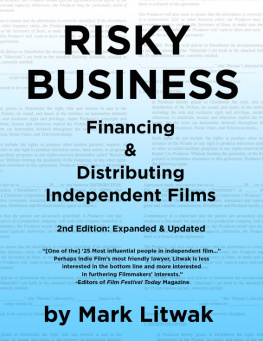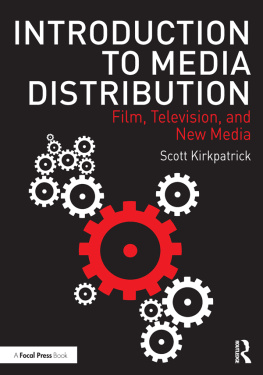British Library Cataloguing in Publication Data
Networks of Entertainment: Early Film Distribution 18951915
A catalogue entry for this book is available from the British Library
ISBN: 9780 86196 681 3 (Paperback)
Published by
John Libbey Publishing Ltd, 3 Leicester Road, New Barnet, Herts EN5 5EW, United Kingdom e-mail:
Distributed Worldwide by
Indiana University Press, Herman B Wells Library350, 1320 E. 10th St., Bloomington, IN 47405, USA. www.iupress.indiana.edu
2007 Copyright John Libbey Publishing Ltd. All rights reserved.
Unauthorised duplication contravenes applicable laws.
Printed and bound in the United States of America
Introduction
Distribution preliminary notes
Frank Kessler
Utrecht University
W hat is distribution? According to Jean Girauds invaluable, and indispensable, Lexique franais du cinma des origines 1930 there are two meanings of the word, which originally are derived from technical theatre terms, the first one referring to a detailed listing of the tableaux or scenes of a film, the second being the equivalent of the English word cast. But there is also a third definition which, of course, is the most relevant one with regard to the problems dealt with in the essays collected here:
In the language of cinema economy: intermediate stage between production and exhibition, or the theatre circuit. Providing exhibitors with prints. Synonym of: renting.
The corresponding activity, to distribute, is consequently defined as: dispatching, placing prints of a film for exhibition purposes.
The different definitions that Giraud proposes for distribution as an aspect of the economy of cinema can be used to map a multi-dimensional field of research raising different sets of questions.
First, distribution has a relay function, it serves as an intermediate stage making sure that an exhibitor receives a steady supply of prints from the various producers. This may actually also be a reason why, up to now, distribution has been a comparatively neglected area, as historians paid much more attention to the two outer ends of the chain: film production, on the one hand, and exhibition that is: the ways in which films encountered an audience on the other. So some of the fundamental questions to ask, are the following: What exactly happens between the two outer ends, between production and exhibition? How did this intermediate stage emerge? In what ways did that stage have consequences for production practices, but also for what, finally, audiences will see on the screens of movie theatres? How did this intermediate stage become institutionalised? By which means did producers, distributors, and exhibitors communicate with each other?
Second, distribution is about placing the films, or rather the prints for exhibition purposes. What factors do come into play here? How did they influence choices that are being made in this area? How were films distributed physically? Which networks did emerge? What economic, political, legal etc. forces had an influence on the circulation of films? Who controlled what, and at which level?
Third, one of the definitions quoted above mentions the specific geographic areas in which distribution takes place. So how did distribution networks function locally, regionally, nationally, and internationally? Were there differences between countries, regions and cities? How were these geographic areas established?
Distribution, in other words, should be understood, in more than one respect, as a key element in the emergence of the institution of cinema. In fact, there isnt really any equivalent for its specific way of functioning in other domains of the cultural industry of that period: in those traditional arts, where one of the defining qualities is the uniqueness of a work, either as an object (a painting, a sculpture) or as a performance (theatre, music, ballet), distribution similar to the way films are distributed is almost per definition excluded. As for works of art that are produced and reproduced in multiple copies (books, etchings, but also gramophone disks), the goal of distribution is to reach a maximum number of buyers. So there are no strategies aiming at the creation of partial monopolies or making choices as to where a copy is to be made available first, as rapidly was the case with regard to film.
Jean Giraud, too, underscores the relative novelty of this phenomenon in the field of the arts. In his entry on renting (location), which he also gives as a synonym for distribution, he remarks the following:
Fact or action of a producer making films available to exhibitors for rent through specialised agents. In the language of the arts and the performing arts this is a relatively new expression.
Girauds comment, in fact, applies to distribution as well. This, of course, is due to the fact that the term is part of the language of cinema economy, as stated earlier, and not of the vocabulary of aesthetics. Distribution is first and foremost linked to the institutionalisation of cinema as an industry and a business.






